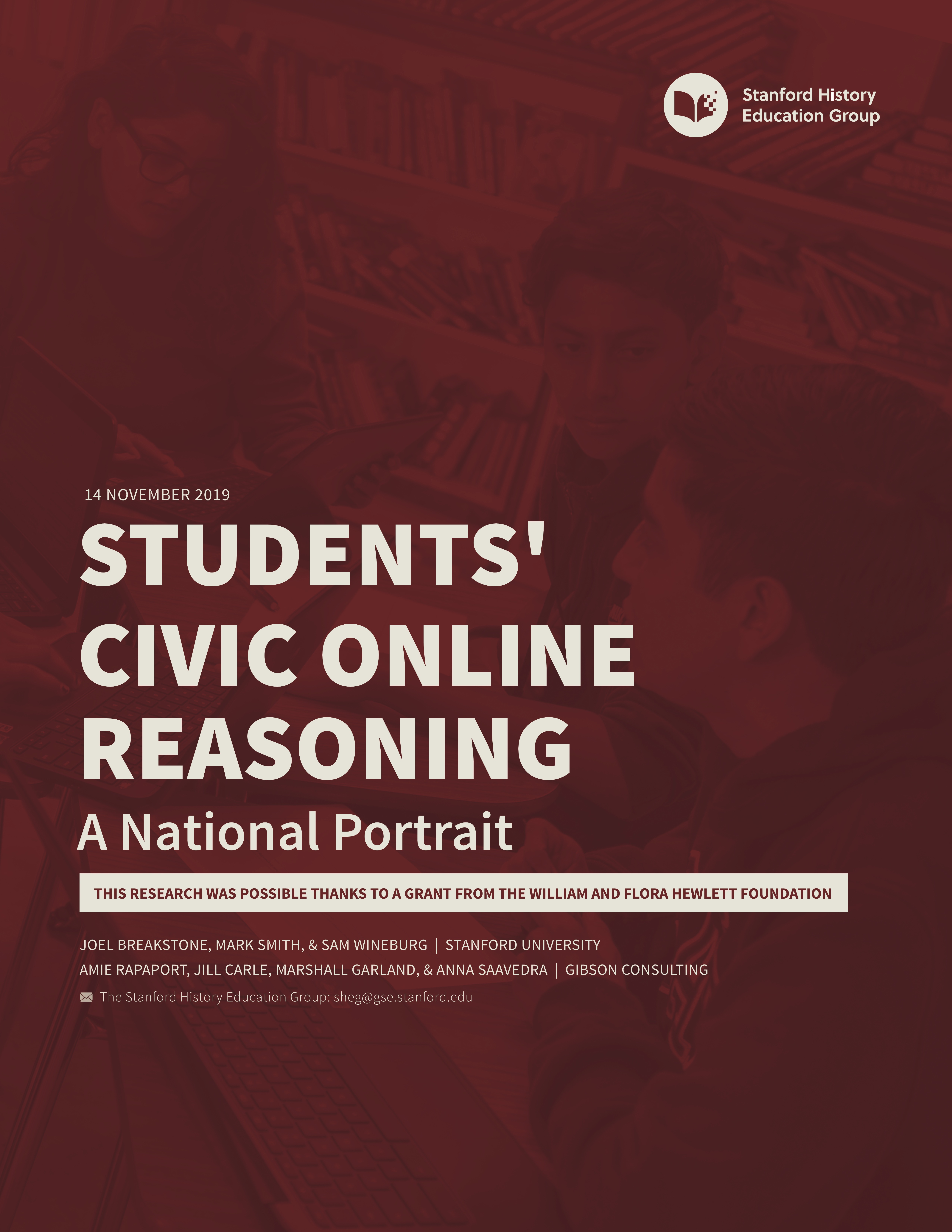
Executive Summary
The next presidential election is in our sights. Many high school students will be eligible to vote in 2020. Are these first-time voters better prepared to go online and discern fact from fiction?
Overview
In November 2016, the Stanford History Education Group released a study showing that young people lacked basic skills of digital evaluation. Since then, a whole host of efforts—including legislative initiatives in 18 states—have sought to address this problem.
National Survey
From June 2018 to May 2019, we administered an assessment to 3,446 students, a national sample that matches the demographic profile of high school students in the United States. The six exercises in our assessment gauged students’ ability to evaluate digital sources on the open internet.
The results—if they can be summarized in a word—are troubling:
- Fifty-two percent of students believed a grainy video claiming to show ballot stuffing in the 2016 Democratic primaries (the video was actually shot in Russia) constituted “strong evidence” of voter fraud in the U.S. Among more than 3,000 responses, only three students tracked down the source of the video, even though a quick search turns up a variety of articles exposing the ruse.
- Two-thirds of students couldn’t tell the difference between news stories and ads (set off by the words “Sponsored Content”) on Slate’s homepage.
- Ninety-six percent of students did not consider why ties between a climate change website and the fossil fuel industry might lessen that website’s credibility. Instead of investigating who was behind the site, students focused on superficial markers of credibility: the site’s aesthetics, its top-level domain, or how it portrayed itself on the About page.
Nearly all students floundered. Ninety percent received no credit on four of six tasks.
Reliable information is to civic health what proper sanitation and potable water are to public health. A polluted information supply imperils our nation’s civic health. We need high-quality digital literacy curricula, validated by rigorous research, to guarantee the vitality of American democracy.
Education moves slowly. Technology doesn’t. If we don’t act with urgency, our students’ ability to engage in civic life will be the casualty.